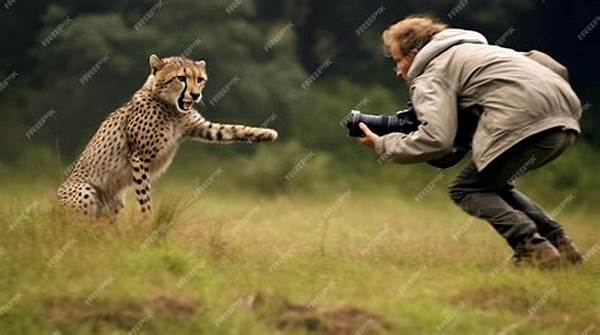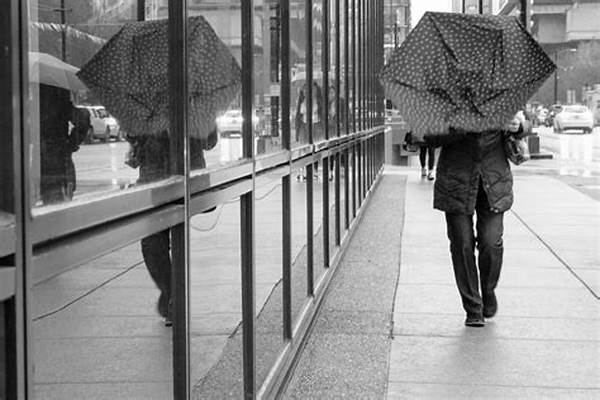Hey there, fellow shutterbugs! Have you ever been out in the wild, camera in hand, and that perfect moment with a scampering squirrel or soaring eagle presents itself? Yet, all you get is a blur? Well, you’re in luck! Today, we’re diving into the exhilarating world of capturing animal motion in photos. It’s all about timing, patience, and sometimes, a bit of luck. But don’t worry, with a few tips and a hint of practice, you’ll be freezing those dynamic moments in no time!
Read Now : Eliminate Clutter With Minimalist Editing
Mastering the Art of Motion Photography
Capturing animal motion in photos is no small feat. Animals, unlike human subjects, rarely stay in one spot or comply with your photo-taking objectives. It’s a challenge but also a rewarding one. The secret? Understanding your gear and knowing when to shoot. Often, it’s about preempting the action. If you’re waiting for a bird to take off, focus, and be ready to click. One great way to ensure success is to use burst mode, giving you several frames of a single moment. Also, get to know the habits of your subject. If you’ve done your homework and understand the behaviors of a cheetah on the hunt or a dolphin mid-jump, you’re halfway there.
Timing is everything. For capturing animal motion in photos, being attentive to your surroundings can significantly enhance your results. Another tip is to adjust your camera settings. Opt for a fast shutter speed to effectively ‘freeze’ the action, and if lighting conditions allow, a higher ISO won’t hurt. It’s also a good idea to practice panning—moving your camera in sync with a moving subject. This technique can produce stunning effects where your subject remains sharp against a blurred background.
As you embark on your journey to mastering capturing animal motion in photos, patience becomes your best ally. Wildlife is unpredictable; there will be times of waiting followed by seconds of rapid action. Stay calm and ready. With dedication, your photo album will soon be brimming with enchanting shots that evoke stories behind each captured moment.
Pro Tips for Capturing Animal Motion
1. Understand Your Subject: Observing animal behavior is crucial. It helps in predicting movements.
2. Gear Up: A fast lens is ideal for capturing quick movements in wildlife photography.
3. Use Burst Mode: This setting increases your chances of getting the perfect shot as pets and wildlife move.
4. Practice Panning: This technique allows you to follow the motion and create dynamic images.
5. Stay Patient: Animals won’t pose for you. Sometimes, you have to wait for that perfect motion.
Tricks to Elevate Your Photography Game
When it comes to capturing animal motion in photos, there are tricks that can elevate your game significantly. For instance, using the right lens can make all the difference. A telephoto lens is quite helpful if you are clicking animals from a distance. These lenses provide versatility and allow you to get close-up shots without spooking the wildlife. Another handy tool is a tripod; it can provide stability, especially when you’re waiting for the perfect fleeting moment.
Read Now : Reasonably Priced Photo Archiving Systems
The thrill of capturing animal motion in photos lies in the unexpected. Animals don’t operate on a set schedule, so staying ready and prepared is key. Use the continuous tracking autofocus mode if your camera has it, so you don’t lose focus as the animal darts across your frame. This camera setting is indispensable in wildlife photography. Lastly, remember to enjoy the process! The experience of being surrounded by nature, watching the intricate dance of life unfold, is as important as the photos themselves. After all, it’s about capturing those fleeting moments you can look back on.
Capturing Motion: Understanding Techniques
The Joy of Capturing Motion
Capturing animal motion in photos can indeed be an addictive pursuit. Whether you’re snapping shots of your energetic pet cat pouncing on a toy or on safari capturing a lion’s graceful stride, the experience can be utterly exhilarating. It’s about seizing those dynamic seconds that express the spirit of movement. Watching and waiting for that magical moment to unfold can sometimes be just as fulfilling as capturing it. Except, of course, when you do manage to snap that ideal shot? There’s truly nothing more satisfying.
The post-production phase is another dimension of joy. Editing your shots allows you to bring out the best elements of your photo. You might adjust the brightness, tweak the contrast, or play with saturation to make those colors pop. Cropping means you can eliminate distractions, focusing on the streamlined elegance of your subject’s motion. Lastly, sharing your artwork on platforms like Instagram or your blog enables a whole new level of interaction. You’ll find yourself excitedly discussing tips and techniques with fellow photographers, all enjoying the fantastic art of capturing motion.
The Lingo: Animal Photography Style
So you’re all hyped about capturing animal motion in photos. Let’s break it down, shall we? You start fiddling with the settings – dial up that ISO if the lighting’s meh. Burst mode’s the real MVP – it grabs like a bajillion pics a second. You’re out there chillin’ with your cam, eyeing that mischievous raccoon. Bam! You finally get the wicked snap of it dashing off. And boy, you’re on cloud nine!
Now, the cherry on top is the edit job. Playing around with brightness, contrast – the works, you really bring out the photo’s pizzazz. It’s all about making the moment so alive. Who needs a painting when you’ve got this killer shot, right? Post that glorious pic on IG or your blog, and boom, the likes roll in. Fans comment, “Whoa, this pic’s lit!” Feels good, right? We’re all just living the vibe, sharing that passion we’ve got for freezing time in a frame.
Wrap-up: Embracing Motion Photography
In the end, capturing animal motion in photos is a journey as much as it is an art. It’s about the adrenaline rush of capturing that fleeting moment when a falcon dives or a deer leaps. The process is an exploration, and with each click, you become more attuned to nature’s rhythm. The thrills come with their challenges, but each obstacle overcome adds to your growth as a photographer.
With every picture you take, you become an ambassador of the wild, sharing glimpses of the life and motion that many don’t have the chance to see firsthand. It’s fulfilling to see your photos spark a sense of wonder in others, appreciating the beauty and unpredictability of wildlife. So grab your camera, get out there, and immerse yourself fully. Let each click lead you deeper into the enchanting world of capturing animal motion in photos. Enjoy every moment of the chase and relish the stories you get to tell through your lens.



